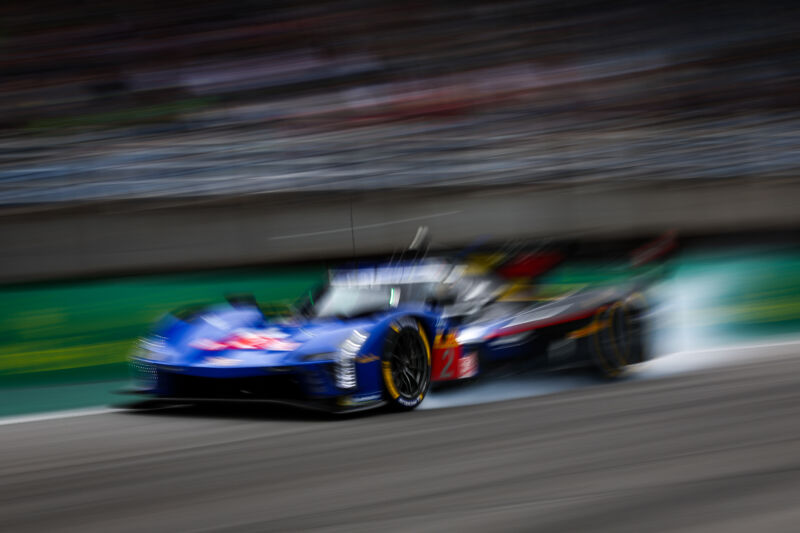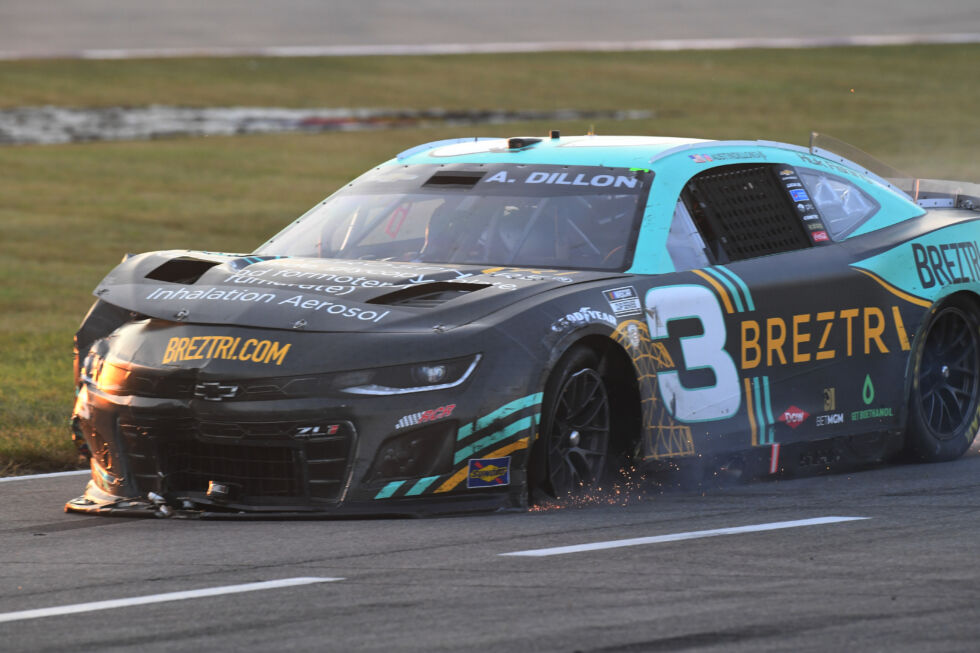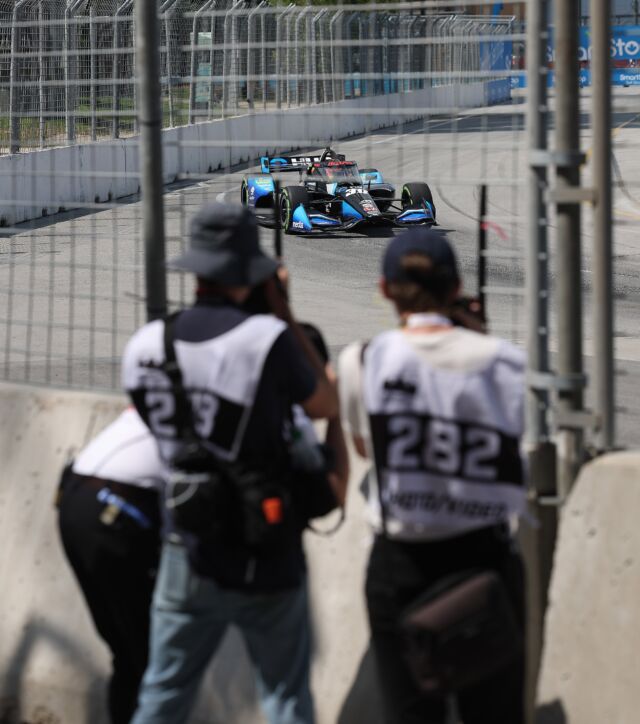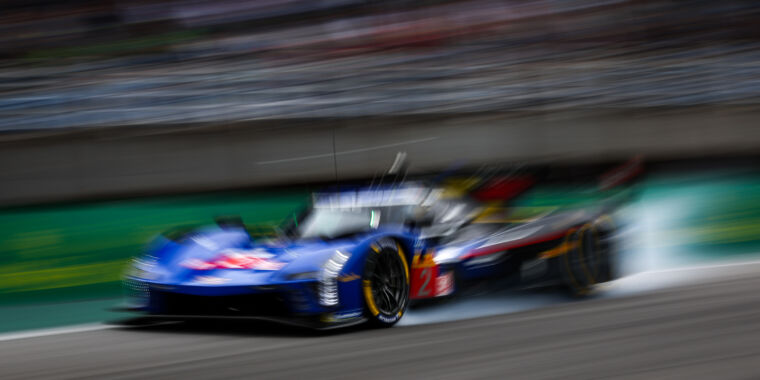
James Moy Photography/Getty Images
It’s hard to escape the feeling that a few too many companies are jumping on the AI hype bandwagon because it’s hype-y, rather than because AI offers some underlying benefit to their business. So I’ll admit to a bit of inherent skepticism, and maybe a touch of morbid curiosity, when General Motors reached out to show off some of the new AI/machine learning tools it’s using to win more races in NASCAR, sports car racing, and IndyCar. As it turns out, that skepticism was misplaced.
GM has a finger in the pie in many motorsports disciplines, but there are four top programs that really make the cut, Real cares. The number one American automaker is NASCAR, still the king of motorsports here, where Chevrolet supplies engines to six Cup teams. IndyCar, once America's favorite race, is home to another six Chevy-powered teams. And then there's sports car racing; Cadillac currently competes in IMSA's GTP class and the World Endurance Championship's Hypercar class, plus a factory Corvette Racing team in IMSA.
“In all the series that we race in, we either have key partners or specific teams that run our cars, and part of the technical support that they get from us is the capabilities of my team,” said Jonathan Bolenbaugh, GM’s motorsports analytics leader, based at GM’s Charlotte Technical Center in North Carolina.
Unlike generative AI, which is being developed to displace humans from creative endeavors, GM sees the role of AI and ML as supporting human subject matter experts so they can make cars go faster. And it’s using these tools in a variety of applications.

General Motors
Each team in each of those different series will have people on the ground at every race (obviously), and invariably more engineers and strategists helping them out from Indianapolis, Charlotte, or wherever that particular race team is based. But they will also be connected to a GM Motorsports team, working out of one of the many command centers at the Charlotte Technical Center.
What did they say?
All three are connected by streams and streams of data from the cars themselves (in a series that allows for car-to-pit telemetry), as well as voice communications, text messages, timing and scoring data from officials, trackside photos and more. And one thing Bolenbaugh’s team and their suite of tools can do is make sense of that data fast enough to do something with it.
“In a series like F1, a lot of teams have students who may be newer team members who are literally listening to the radio and typing in what's going on and saying, 'Hey, this is about pits. This is about track conditions,'” Bolenbaugh said.
Rather than give that to the interns, GM built a real-time audio transcription tool to do the job. After trying a commercial off-the-shelf solution, it decided to build its own, “a combination of open source and some of our own code,” Bolenbaugh said. As anyone who’s ever been to a race track can tell you, it’s a noisy environment, so GM had to train models with all the background noise present.
“We’ve been able to improve the accuracy and usability of the tool tremendously, to the point where the manual support for that capability is now diminishing,” he said. The benefit of that is that the people who would otherwise be doing transcriptions now have more time to use their brains in more useful ways.
Take a look at this
Another tool that Bolenbaugh and his team developed was built to quickly analyze footage shot by trackside photographers working for the teams and OEMs. While some of the footage they shoot might be for marketing or PR, a large portion of it is for the engineers.
Two years ago, it took two to three minutes to get those photos from the photographer’s camera to the team. Now, “it takes seven seconds to go from the shutter button on the track at a NASCAR event to the AI tag in an application so we can extract information from those photos,” Bolenbaugh said.

Jeffrey Vest/Icon Sportswire via Getty Images
“Time is everything, and the fastest lap time we do – the Coliseum would be an outlier, but maybe 18 seconds is probably a fast lap time. So we have to be faster than when they pit until they come back,” he said.
When this particular tool was used in a NASCAR race last year, one of GM’s partner teams was able to avoid a pit stop after their driver went over the wall. The young engineer who developed the tool was able to show them a photo of the right side of the car from a few seconds ago, showing that the car had sustained no damage.
“They didn't have to wait for a spotter to come and look, they didn't have to wait for the driver's opinion. They knew there was no damage. That team made the play-offs in that series by four points, so if they had gone into the pits, there's a good chance they wouldn't have made it,” he said. In cases where a car is damaged, the image analysis tool can automatically flag that and quickly let you know with an alert.
Not all images are used for these kinds of quick decisions: engineers can also infer a lot about their competitors from photos.
“We're very interested in things that have to do with the geometry of the car for setup settings: reed settings, wing angles… ride heights of the car, how close the car is to the ground. Those are all things that we'd like to know from an engineering standpoint. Those are objectives that we'd like to have when doing image analysis,” said Patrick Canupp, GM's director of motorsports competition engineering.

Steve Russell/Toronto Star via Getty Images
“It's not easy to take a set of still images and extract a lot of technical information from them. And so we're actively working on that to help with all the images that we get on a race weekend – there are thousands of them. And so it's a lot of information that we have at our disposal, and we want to try to maximize the technical information that we get from all that data. It's kind of a big data problem that AI is really focused on,” Canupp said.
The computer says we need to pit now
Remember that transcribed audio feed from earlier? “If a group of drivers start talking about something similar in the race, like track conditions, we can infer, based on … the occurrence of certain words, that the track is changing,” Bolenbaugh said. “It can't just be your car … if drivers are talking about something on the track, it can increase the likelihood of a warning, which is part of our strategy model.”
That would create a strategy tool that also extracts lap times from timing and scoring, and also fuel consumption data in racing series that is available to all cars. Or a predictive model to do the same in series like NASCAR and IndyCar, where teams don’t see such data from their competitors, nor do they see models of tire wear.
“One of the biggest things we have to manage is tires, fuel and lap time. It's all a trade-off between trying to run the race as quickly as possible,” Bolenbaugh said.
Races are of course dynamic situations, and so “several times per lap, as the scenario changes, we update our recommendation. So, with a tire fall [as the tire wears and loses grip]you're following in real time, predicting where it's going to go. We're constantly evolving throughout the race and doing transfer learning, so we're going into the weekend, as the race is unfolding, continuing to train models in real time,” Bolenbaugh said.

